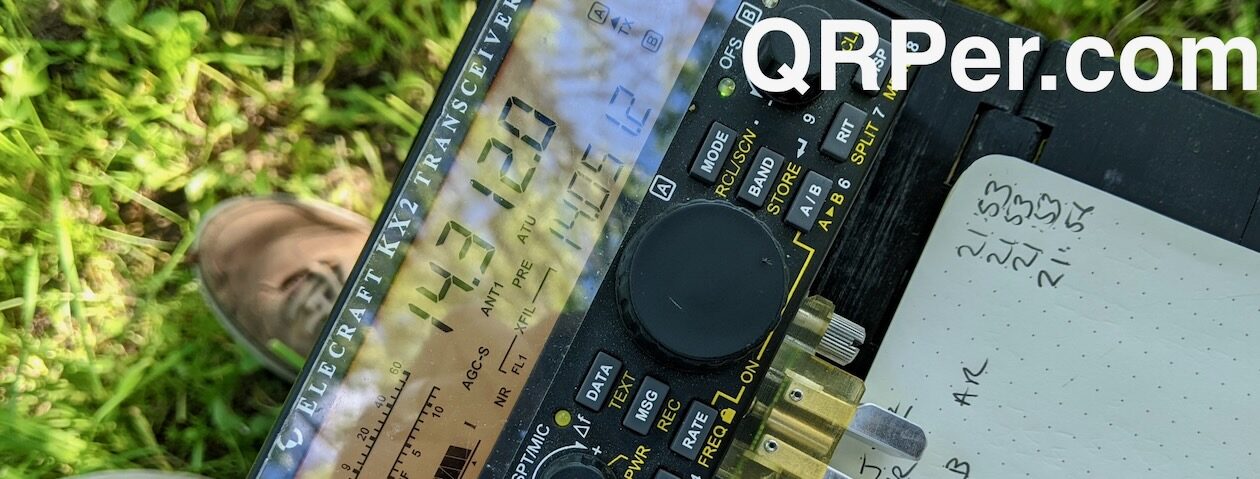 Because I receive so many tips from readers here on QRPer, I wanted way to share them in a concise newsletter format. To that end, welcome to another QRPer Notes, a collection of links to interesting stories and tips making waves in the world of radio!
Because I receive so many tips from readers here on QRPer, I wanted way to share them in a concise newsletter format. To that end, welcome to another QRPer Notes, a collection of links to interesting stories and tips making waves in the world of radio!
VE6LK’s “One CW Question” YouTube Series
My good friend, Vince (VE6LK), came up with a great idea a few weeks ago: reach out to CW ops and ask one question that might help newcomers to Morse Code. Each video is 2-3 minutes long and features a number of ham radio operators who operate CW (I’m chuffed to be one of them). I’ve learned something from each of these videos. Click here for the full playlist, or start watching via the embedded player below:
LICWC CW Haptic Device
Many thanks to Perry (N5PJ) who shares this video from Kyle (AA0Z):
Simple FT8/FT4 via a KX2 and iPhone
Many thanks to Jason (KD9ZHF) who shares the following video from Mark (KD7DTS):


Thomas,
Thanks for both appearing on and the plug for “One CW Question”. I’m having a *hoot* creating the series and am meeting some very cool people, something that always energizes me.
If QRPer.com readers have suggestions on who else I should interview for the series, please drop me a line to ve6lk @ myrac dot ca along with the callsign and email address of the person – including if they wish to self-nominate. I’m especially interested to branch out beyond North America for this series.
72,
.Vince
Thomas,
thanks for posting the KX2 FT8 video, I think I need to try that at the park next…
Conrad
I determined today that if you have an older iPhone with a lightning port instead of USB-C, you can use Apple’s Lightning to Headphone Jack adapter in place of the suggested USB-C to TRRS adapter and it works fine with IFTX and the KX2. I made a 20m FT8 QSO today with this setup. Also another trick I used is to utilize the per band Quick Memories on the KX2 to store the FT8 and FT4 frequencies on the bands that I operate these modes. Quick Memory will also store the DATA mode and other settings, simplifying the setup needed to switch from SSB or CW to operating FT4/FT8.
It should be mentioned that IFTX takes considerable liberties with the WSJT-X software concept. I did make some contacts with it, but it needs some changes to be truly useful.
Operational: The software will ONLY let you call stations that are literally calling CQ. You cannot reply to stations sending the 73 period who often get another call immediately from others and may not literally call CQ any time soon. And if you reply to a CQ and the station comes back to someone else, rather than continuing to call (remember, you are probably not on his frequency) you get a big, obnoxious red banner that says “LOST” and you will have to wait for that station to call CQ again before you can call again. WSJT allows you to initiate a call to anyone you can receive at any time, which is how FT8 should work.
Technical: In WSJT there is a split mode that shifts your center VFO frequency if you are calling below 1500 Hz. You keep your relative position in the 3kHz passband, but the radio changes TX center frequency. Why? Because the idea is to keep harmonics of your audio frequency outside the 3kHz passband of the FT8 segment where they will be suppressed rather than transmitted over the air. Example: if you are transmitting on 1600 kHz, the second harmonic would be 3200 kHz, safely suppressed. But if you are on 800 Hz, the second (1600 kHz) and third harmonic (2400 kHz) are NOT suppressed and are transmitted (at somewhat lower power), but are still transmitted over the air. WSJT has a mode called “fake it” that provides this if you don’t have rig control to move the VFO on transmit. I would definitely operate using TX frequency above 1500 kHz with this software. To be a good neighbor to your fellow hams…
While it “works” and is cheap, IFTX is not really ready for prime time, IMHO.
73, Kevin K3OX